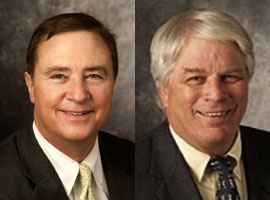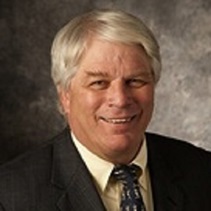The Wealth Of Cities: Just As Important As The Wealth Of Nations
Michael Cox and Richard Alm of SMU's Cox School say the wealth of cities is just as important as the wealth of nations.

By Michael Cox and Richard Alm
Adam Smith immortalized “The Wealth of Nations,” but prosperity in today’s world increasingly depends on the wealth of cities. In the United States, the 25 largest metropolitan areas churn out more than 40% of all economic output; the top 65% account for 65%.
 Michael Cox |
 Richard Alm |
Cities thrive because proximity, density and closeness produce an environment where human creativity and cooperation flourish. Cities attract the best and brightest and let them reach for the stars. New ideas emerge, percolate, mutate and spread. Most of humanity’s economic progress has sprung from the perpetual churning of ideas and enterprises that takes place in the urban milieu.
Looking around the country, we find huge gaps in major metropolitan areas’ economic fortunes — for every booming Dallas-Fort Worth, there’s a sclerotic Detroit.
Adam Smith’s principles, put forth more than two centuries ago, go a long way toward explaining why some areas do so much better than others. In “The Wealth of Nations,” the Scottish economist linked prosperity to a political economy of freedom, built upon private property, market incentives, free trade, specialization and a culture of commerce.
To see how Smith’s wisdom applies to the wealth of cities, we use an index of economic freedom for U.S. metropolitan areas that focuses on three broad factors — size of government, the tax burden, and labor-market freedom. The result is a single number that ranks each Metropolitan Statistical Area (MSA) from zero to 10 on economic freedom, with zero being lowest and 10 being highest.
MSAs that score highly on the index tend to have relatively low taxes, smaller government spending and public employment, less dependence on government transfers, pay rates largely driven by market forces, and below-average union membership. In short, these cities limit government and give markets more breathing space, letting businesses and individuals make the decisions that shape local economic activity.
Economic freedom varies among the nation’s 380-plus metropolitan areas — from a high of 8.52 in Naples, Fla., to a low of 3.32 in El Centro, Calif. Among the largest cities that account for most of the nation’s economic vitality, the freest MSAs are centered on Tampa, Houston, Dallas, Miami, Orlando, Denver, Atlanta, San Antonio, St. Louis and Phoenix.
Faster Growth
Does greater freedom produce more vibrant local economies, ones that grow faster and create more jobs? To focus on the bigger cities that are the primary engines of the U.S. economy, we looked at the 100 largest MSAs — those with populations above 542,000. We divided these into five groups of 20, arrayed from highest to lowest in economic freedom.
The freest MSAs saw their economies grow by 30% from 2001 to 2013, after inflation. The next group expanded by nearly as much — 27.5%. After that, average growth declined substantially as economic-freedom scores waned.
Turning to job creation, the freest 20% recorded average employment gains of 17% from 2011 to 2014. The rate of job creation fell by half for the second-freest 20%, then nearly halved again for those at the bottom.
Most likely, these numbers reflect lighter tax burdens, which improve market incentives for activities that contribute to growth and job creation — working, investing, building job skills, starting businesses. MSAs with freer labor markets also create an edge by shunning high minimum wages, strong unions and other interventions that raise the cost of adding workers. State-level right-to-work laws are particularly important in restraining union power. Freer MSAs are also likely to attract companies looking to relocate to more business-friendly environments.
Free Labor Markets
Unemployment rates are lower in MSAs with greater labor-market freedom, averaging 6.1% for the most-free group and 5.8% for the second 20%. Unemployment then rises steadily as economic freedom scores decline, reaching 7% for the least-free group.
Perhaps surprisingly, the average cost of living is nearly 35% lower in the most-free MSAs than in the least-free group, suggesting a link between economic freedom and higher living standards
Housing prices contribute heavily to variances in living costs. MSAs with greater economic freedom impose fewer impediments on new housing, so supply-increases blunt price pressures. The same applies to other markets — less government meddling and greater market competition help keep prices low.
The combination of low taxes and living costs makes paychecks go further. Wage rates are often quite high in places with low economic freedom, such as New York and Los Angeles. After adjusting for differences in taxes and living costs, however, average hourly wages are nearly $16 in the 40% of MSAs scoring highest in economic freedom. Adjusted pay in the least-free group falls to $12.40.
The less-constrained capitalism of the freest cities doesn’t widen the rich-poor gap. Income inequality, measured by wage dispersion, is lowest for the middle 20%, but the most-free cities show significantly less inequality than the least-free ones.
The evidence suggests that Americans recognize that metropolitan-area economic freedom makes them better off. Among the 100 largest MSAs, the freest 20% attracted a net in-migration of 9 million people from 1992 to 2011, while the least-free 20% showed a net loss of more than 7.1 million. The net gain for the freest group was 24%, compared to a net loss of 14% for the least-free MSAs.
Economic freedom in U.S. cities faces a constant threat from those who would raise taxes, spend more on pet projects, redistribute wealth or impose restrictions on how others use property. The metropolitan areas that resist these demands reap the gains of greater economic freedom.
# # #